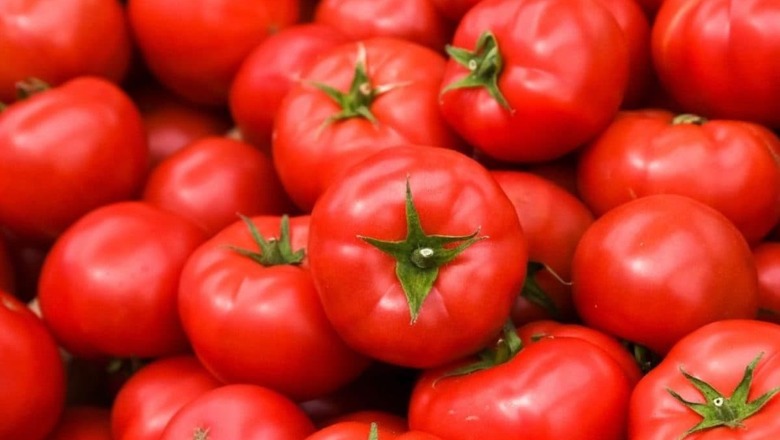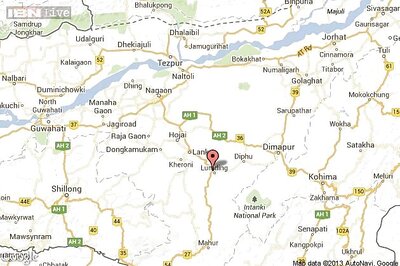
views
Is it a matsutake? A white asparagus? Noooo, it’s SuperTomato. At Rs 160-180 a kilo in cities, tomatoes have been playing ketchup with exotic comestibles for much of this month in India. And not for the first time. Many excuses are given for inadequate supplies, some natural like excessive rain, others manmade like the recent panchayat elections in West Bengal that led to a shortage of labour and transport.
And this despite the fact that at 22 million tonnes, India is the world’s second largest producer of this fruit-turned-vegetable that came from the Americas. China incidentally grows over double that quantity—a quarter of the world’s total—mostly in its troubled Xinjiang province, with nary a dish or relish to indicate a developing tradition of local consumption anywhere in the country. Pulp fiction or what?
Strategic self-restraint, more likely. The yearly per capita consumption of tomato products has hovered around 34 kg in the US and 18kg in Italy for the past decade; in China it is just 2 kg. Khaatey nahi, khilatey hain (not eaten, fed) is its mantra. Nor has China succumbed to the “soss ka big boss”—ketchup—domestically as India has. American chop suey that uses ketchup, is neither American nor Chinese!
Tomatoes grown in China are processed into paste, canned and exported. China has developed a steady market so even the US import ban under its Uygur Forced Labor Prevention Act in 2021 could not crush its processing industry. That is because its tomato paste was not destined for the USA, but Europe, Asia and Africa. Italy bought 20%, followed by Russia (16%), Ghana and Philippines (6%) etc.
India processes very little of the tomatoes it grows—approximately 1.5 lakh tonnes out of the production of 22 million tonnes—and buys the rest as a fresh ingredient. So shortages do not put a squeeze on ketchup but on individual shopping bags. Most tomato varieties grown by Indian farmers are not suitable for processing, which indicates policy makers did not consider this industry as a long term goal.
The top tomato cultivating states are Madhya Pradesh and Andhra Pradesh followed by Karnataka, Gujarat, Maharashtra, West Bengal, Chhattisgarh, Telangana, and Tamil Nadu. Given India’s wide climate variations between north and south, tomatoes are sowed and harvested throughout the year but the peak availability is between November and February. In summer there is a bit of a lull—hence shortages.
Stories of Chinese tomatoes being intercepted while being smuggled into India via Nepal may trigger mirth, it points to the fact that India’s inability to ensure steady supplies is exploited by our neighbour. Even when prices fall in India because of a glut, China still capitalises by selling its processed tomato pulp at even cheaper prices, depriving Indian farmers of an alternative for their table tomatoes.
Curiously, although most tomatoes are grown for use in cooking, most Indians do not ask for them by name. In the west, tomatoes have names, indicating size, shape or region such as Roma, San Marzano (available in India in canned form), Beefsteak, Brandywine and many more. For the average Indian buyer there are three main ‘varieties’—hybrid or commercial, desi or local and organic. No names are taken.
Tomatoes arrived in India and China at the same time—around the 16th century—via European traders. People in both places named them ‘foreign aubergines’ perhaps due to their red hue and were initially wary of eating them. Even Europeans regarded tomatoes only as decorative plants for a long time. Early in the 20th century, though, Chinese and Indian attitudes towards tomatoes fatefully diverged.
China did not succumb to its charms: small rises in domestic sales have been attributed to more consumption of western fast food. Such was their integration in India, though, that tomatoes are now truly pomo d’oro or golden apples (as the Italians named it) for farmers. No ancient culinary tradition besides India’s has been so accommodative of the ‘Columbian Exchange’ which includes potatoes, tomatoes and chillies.
In India butter chicken, dal makhni, shahi paneer, chicken lababdar, tomato rice, pav bhaji, tomato thokku and chutney, tomato chokha, masor tenga and more have ensured that solanum lycopersicum has permanent place in kitchens across India. This devotion to tomatoes means that periodic shortages give farmers windfall gains, shipments are hijacked, and tomatoes almost become parallel currency.
China cuisine has sour elements that tomatoes could have exploited; but domestically they remain just a fruity treat there, even eaten freshly sliced and sprinkled with sugar rather than as a base for sauces. India adopted tomatoes despite other souring agents from kachampuli, kokum and tamarind to limes, anardana, amchur, curd and vinegar. But the latest prolonged shortage has finally injected a sour note.
So time is ripe for rediscovering India’s traditional tangy ingredients. As transport, storage and distribution networks to maintain regular tomato supplies still appear to be impossible for government and private vendors, Indians must take personal steps to reduce dependence and even change habits if needed. Potatoes cannot be preserved in some other form to compensate for shortfalls, but tomatoes can.
The tomatoes’ insertion into the holy north Indian masala trinity of ginger-garlic-onion in daily dishes can be swapped with indigenous souring agents. Italians invented passata, a puree processed and bottled at home to preserve tomatoes as soon as they are harvested to ensure supply all year round, more tomato-based masala mixes crucial to many desi dishes need to be developed—and adopted by Indians.
Till about 60 years ago, masalas like turmeric, red chillies, coriander and cumin seeds were freshly ground by hand in most Indian kitchens; today powdered masalas are the norm. Tomatoes need a similar change of form, from fresh to pastes or purees. India has a few major all India puree brands but not enough regional ones that can offset transport disruptions and also benefit local producers and processers.
Indians need to deal with their love for tomatoes more pragmatically, if only for the sake of their pockets. Deciding where tomato puree can be used instead of fresh and acting accordingly is key. Once it is clear to what extent Indian consumers are willing to substitute fresh for puree, growers will sow relevant varieties accordingly. In short, India needs to become more Chinese when it comes to tomatoes.
The author is a freelance writer. Views expressed in the above piece are personal and solely that of the author. They do not necessarily reflect News18’s views.


















Comments
0 comment